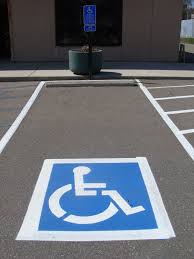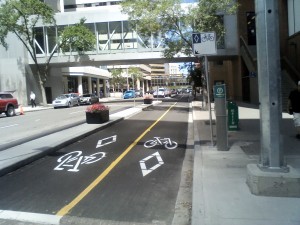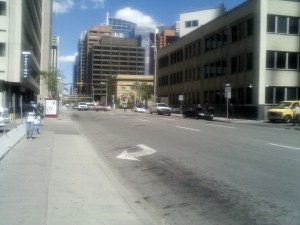
It has been brutal watching Naheed Nenshi and his gang on Calgary’s city council circling like hyenas over the spoils of an unbudgeted $52 million tax increase that they acquired through essentially stealing a tax break given to Calgarians by the government of Alberta. As Calgarians took notice and began to show ire towards this sudden gouge upon their wallets, Nenshi and the rest of council scrambled to cobble together a supposed consultation process on what to do with this money they were absconding with. As it became evident that Calgarians were overwhelmingly choosing to demand that the ill-gained money be returned to them, Nenshi upped the ante and created a literal circus-like atmosphere and held an idiotic public game show where it was discussed how Calgary’s unbudgeted tax hike should be spent.
Despite Nenshi’s dog and pony show, it still was becoming abundantly clear that most Calgarians simply wanted their damned money back. In light of this, Nenshi turned this already foolish “consultation” process into a total joke by making it “qualitative” rather than “quantitative” in nature. What this is essentially saying is that they do not care what the majority of respondents to their little poll chose as those asking for things like a refund of stolen money clearly were giving answers of low quality. It does not matter if 90% of Calgarians wanted their money back in the city poll as those figures are apparently not important. In other words, Nenshi and his cronies can come up with whatever conclusion they like from this circus and claim that it was endorsed by over 10,000 Calgarians.
All of this is not surprising as Nenshi took part in a similar joke of a consultation with Calgarians only a few years ago. This multi-million dollar disaster was coined “ImagineCalgary” and supposedly the product was created through the input of no less than 18,000 Calgarians. Few things can better demonstrate the utter idiocy and waste with these supposedly “qualitative” consultations than the ridiculous ImagineCalgary document itself which can be found in full here.
Below are the five simple questions (familiar number) that were asked for ImagineCalgary.
What do you value about Calgary?What is it like for you to live here?
What changes would you most like to see?
What are your hopes and dreams for the next 100 years?
How can you help make this happen?
From the above simple and fluffy questions Nenshi and others excreted the 210 page ImagineCalgary document that really is so bad that it can’t even be found in full on the ImagineCalgary website. Even those employed in promoting this mess are ashamed of the product of this exercise. Shouldn’t such brilliance be front and center on their site otherwise? Alas, it is hidden deeply in the bowels of the City of Calgary site. I provide it here too of course.
I don’t think I could possibly drop enough LSD to make sense of the mess created in ImagineCalgary. It truly is a crowning achievement in the concept of baffling with bullshit through only five simple questions. No wonder Nenshi was so eager to try and do it again to mask his sudden $52 million tax hike upon Albertans.
Below is a top 10 list of what came from apparently asking 18,000 Calgarians five simple questions. I am not sure which are worse, the ones that set targets so unrealistically high that they will never be achieved in a million years, the ones that would come with government interference so deep that Stalin would blush, or the ones that simply look like the product of a person who had just ingested a 1/2 pound of pot. I will list a few of each.
By 2016, 90 per cent of Calgarians report that they have opportunities to express their unique gifts and talents
Only three years to go here. Hope those barriers are torn down soon whatever the hell they are.
By 2036, 90 per cent of citizens agree that “Calgary is a city with soul,” which is defined as citizens having meaning and purpose in life and experiencing ongoing feelings of connectedness with some form of human, historic or natural system.
Oh good, we have a realistic timeline here. It will take at least another decade to get even 50% of Calgarians to give a shit if municipalities have souls much less wonder if their own has one.
By 2036, 100 per cent of Calgarians report that they feel respected and supported in their pursuits of meaning, purpose and connectedness, and that they extend respect and support to others who meet this need in ways different from their own.
No less than 100% here. Lofty indeed. I do hope that I can live until 2036 so that I can be the one asshole left in Calgary who did not feel supported in my pursuit of connectedness thus killing their goal. I am just nasty that way.
By 2016, 95 per cent of Calgarians report that they feel safe walking alone in their neighbourhoods and walking alone downtown after dark
This one will be tough as 50% of Calgarians will feel unsafe when approached by strangers after dark asking them if they feel safe. How else will Nenshi know if we have hit the 95% mark? This will be tougher if Pincott’s crusade against light pollution continues too.
By 2036, 95 per cent of children aged two to five years exhibit high levels of emotional well-being and age-appropriate levels of attention span and impulse control, as measured by the Ages and Stages Questionnaire.
I was thrilled when my two year old kids made a poopy all by themselves in a toilet. Can’t imagine 95% of them taking part in detailed questionnaires but who knows. I bet their answers will make more sense than most of those in this loony ImagineCalgary document.
By 2016, by the age of six years, 95 per cent of Calgary children exhibit school readiness, as reflected by physical well-being and appropriate motor development; emotional health and a positive approach to new experiences; age-appropriate social knowledge and competence; age-appropriate language skills; and age-appropriate general knowledge and cognitive skills.
Come on, how many of the 18,000 put down that mouthful as a priority? One? Two?
By 2036, the consumption of urban- and regionally produced food by Calgarians increases to 30 per cent.
Here come the food tariffs. Say goodbye to those bananas.
By 2016, governance is restructured to allow governments to create or reallocate authority so that effective decisions are made at the geographical scale that matches the processes involved.
Say that ten times quickly. Now drink until it makes sense or you pass out. Whatever comes first.
By 2036, 80 per cent of non-violent criminal offences are handled in the community in which the victim lives.
I guess courthouses for prostitutes, drug dealers and car thieves will be set up in every community. Nenshi had better let the other levels of government know he is bypassing the constitution and having the civic government assume authority of criminal issues. May cause a smidgen of confusion there.
By 2036, 85 per cent of Calgarians, in all age groups, maintain excellent or very good mental health.
All those in poor mental health shall be deported in order to achieve civic goals!
Well folks, there you have it. This is what Nenshi and his compatriots can compile through a qualitative analysis of five simple questions.
Nenshi and company will simply fabricate whatever outcome they like from this latest façade of “consultation”. After creating ImagineCalgary, coming up with ways to blow a $52 million tax hike will be a breeze.
 Commuters can’t go one more station South as the Canyon Meadows park and ride is already full to overflowing (likely spaces next on the city hit list).
Commuters can’t go one more station South as the Canyon Meadows park and ride is already full to overflowing (likely spaces next on the city hit list).























